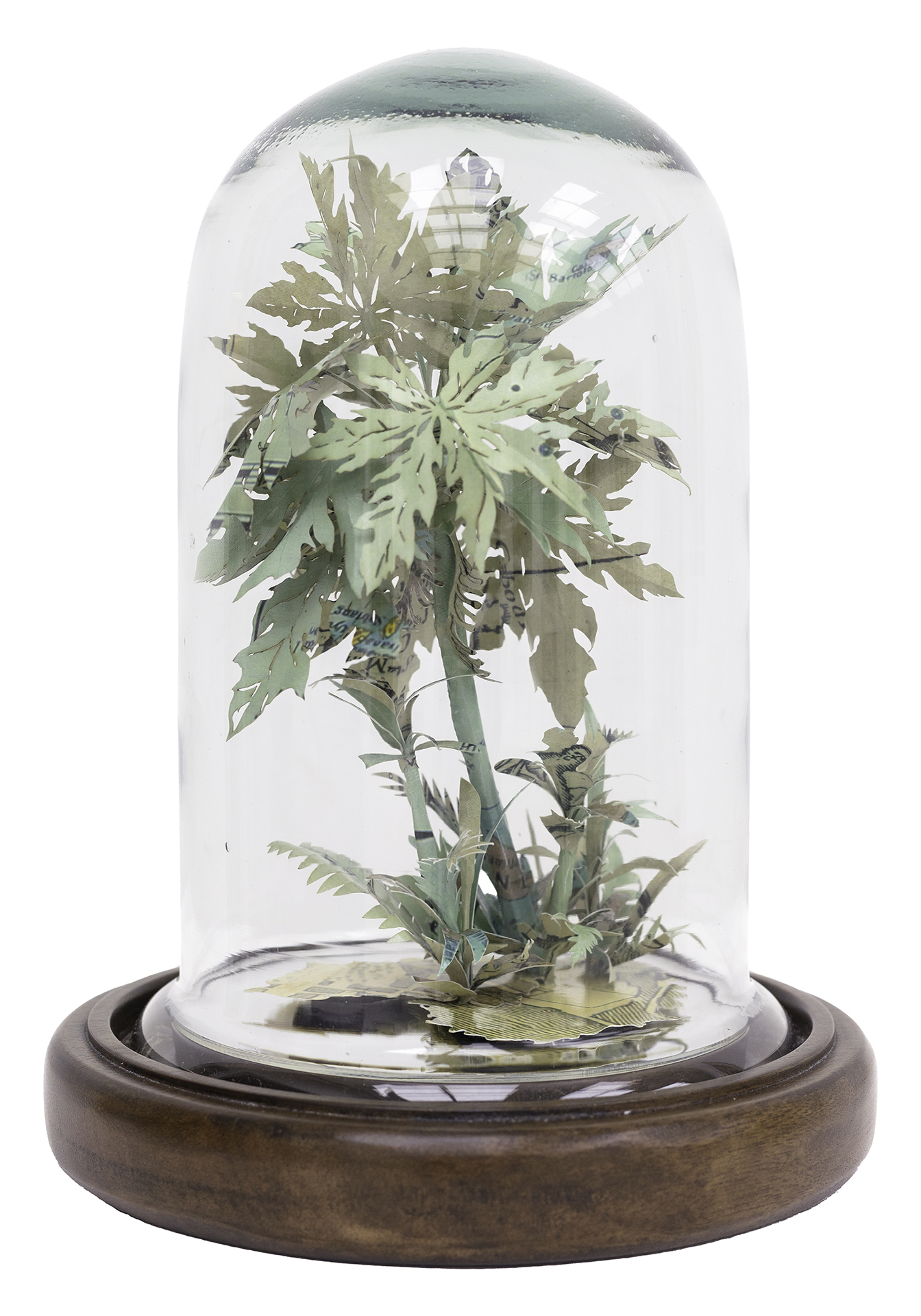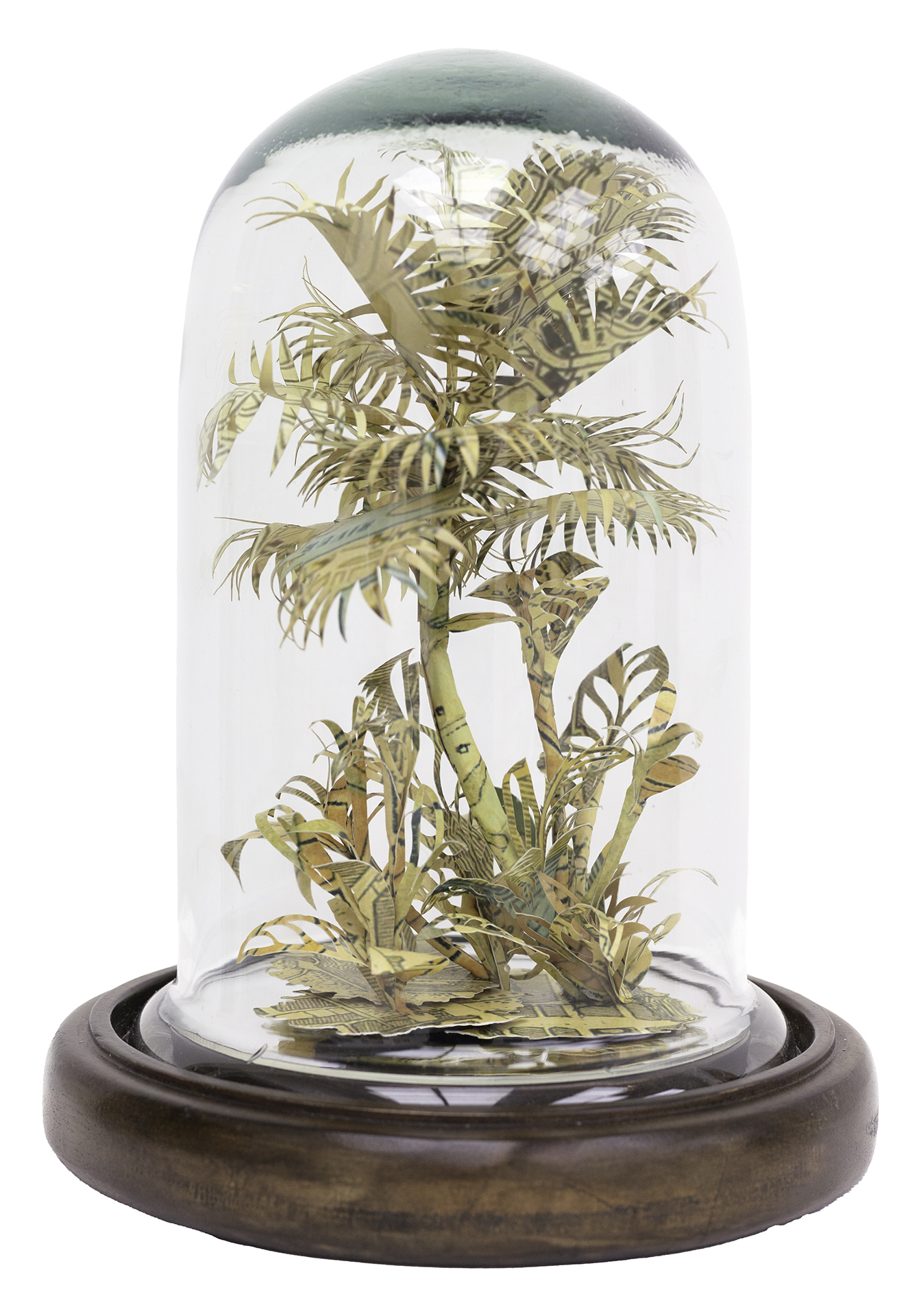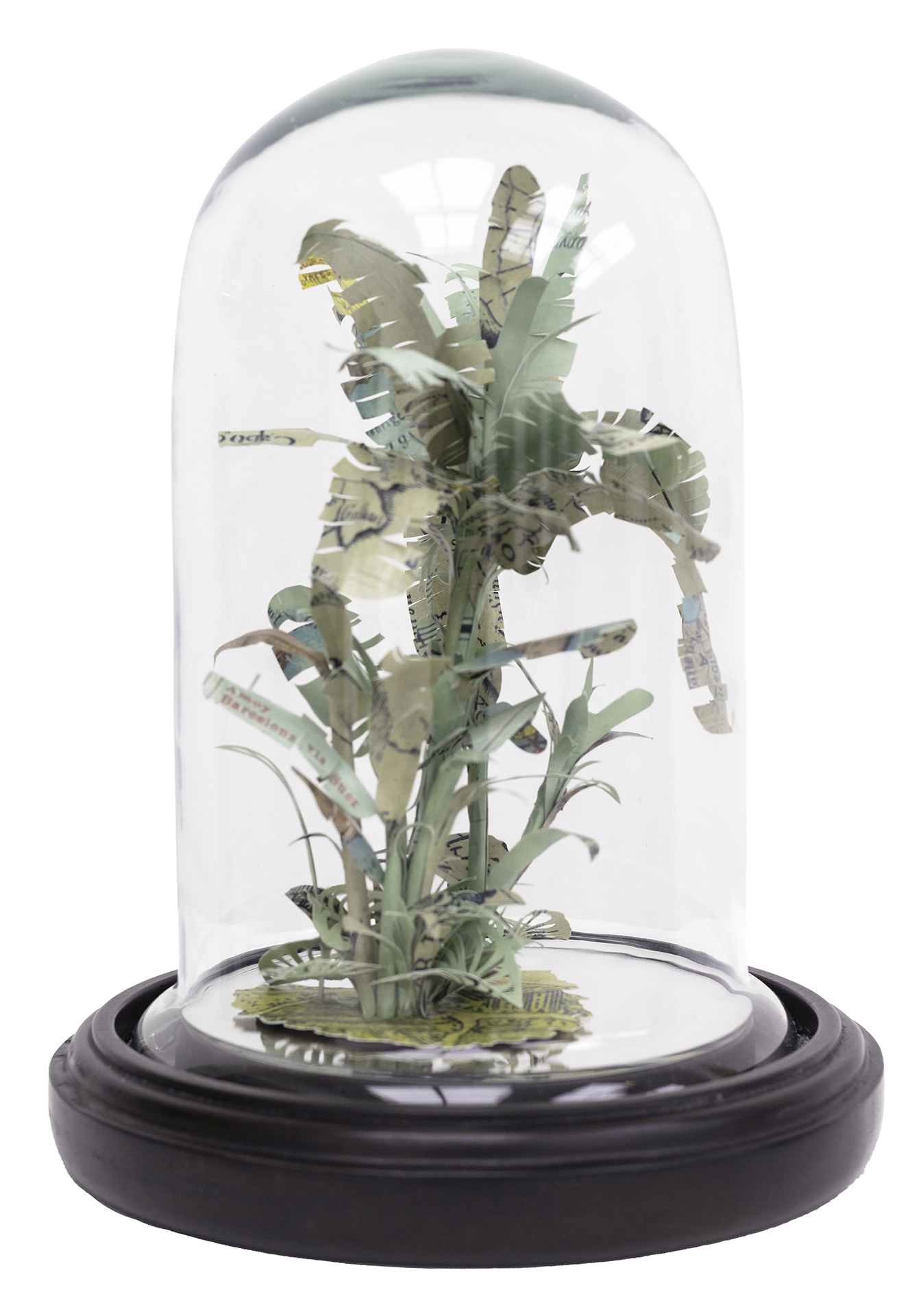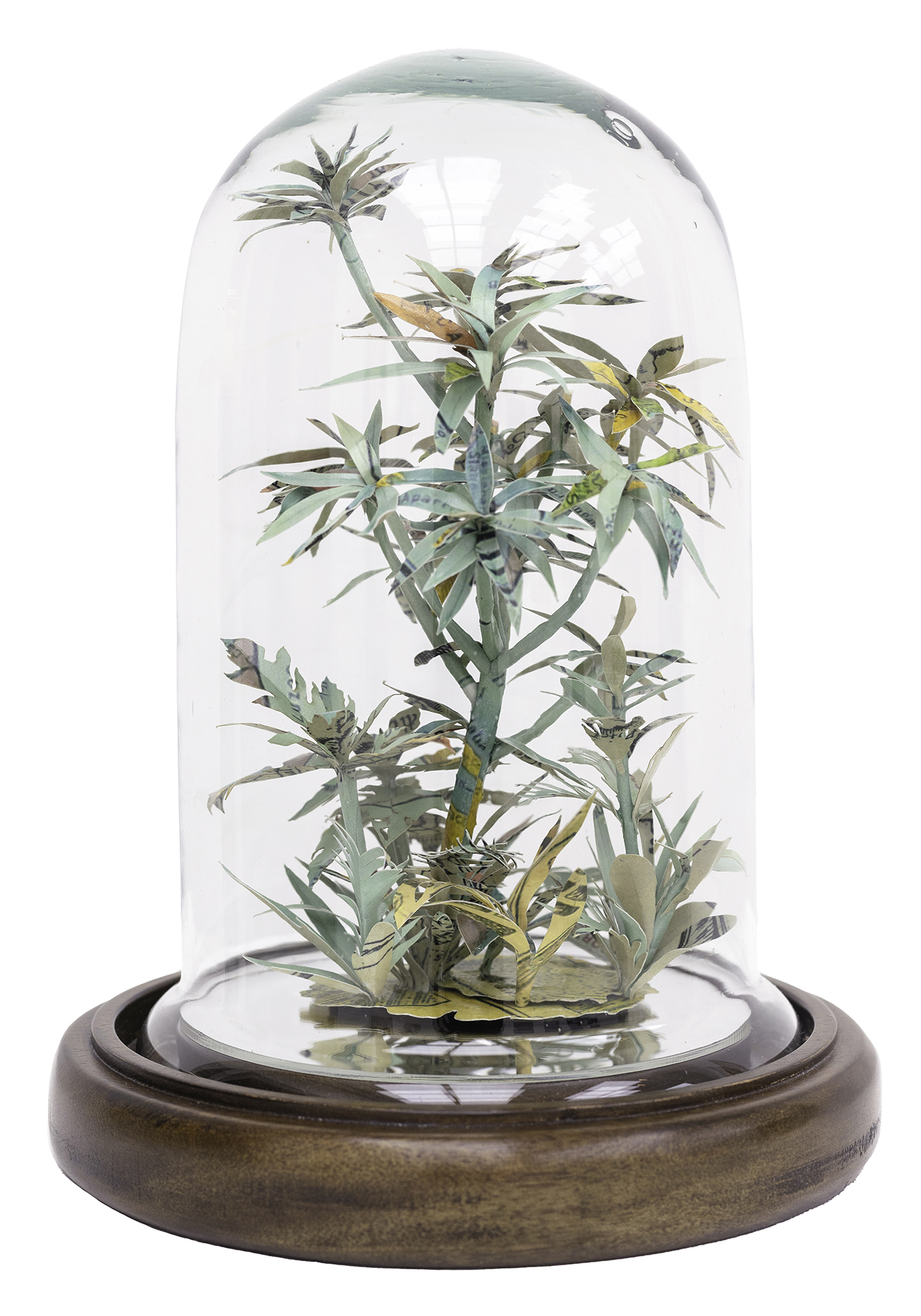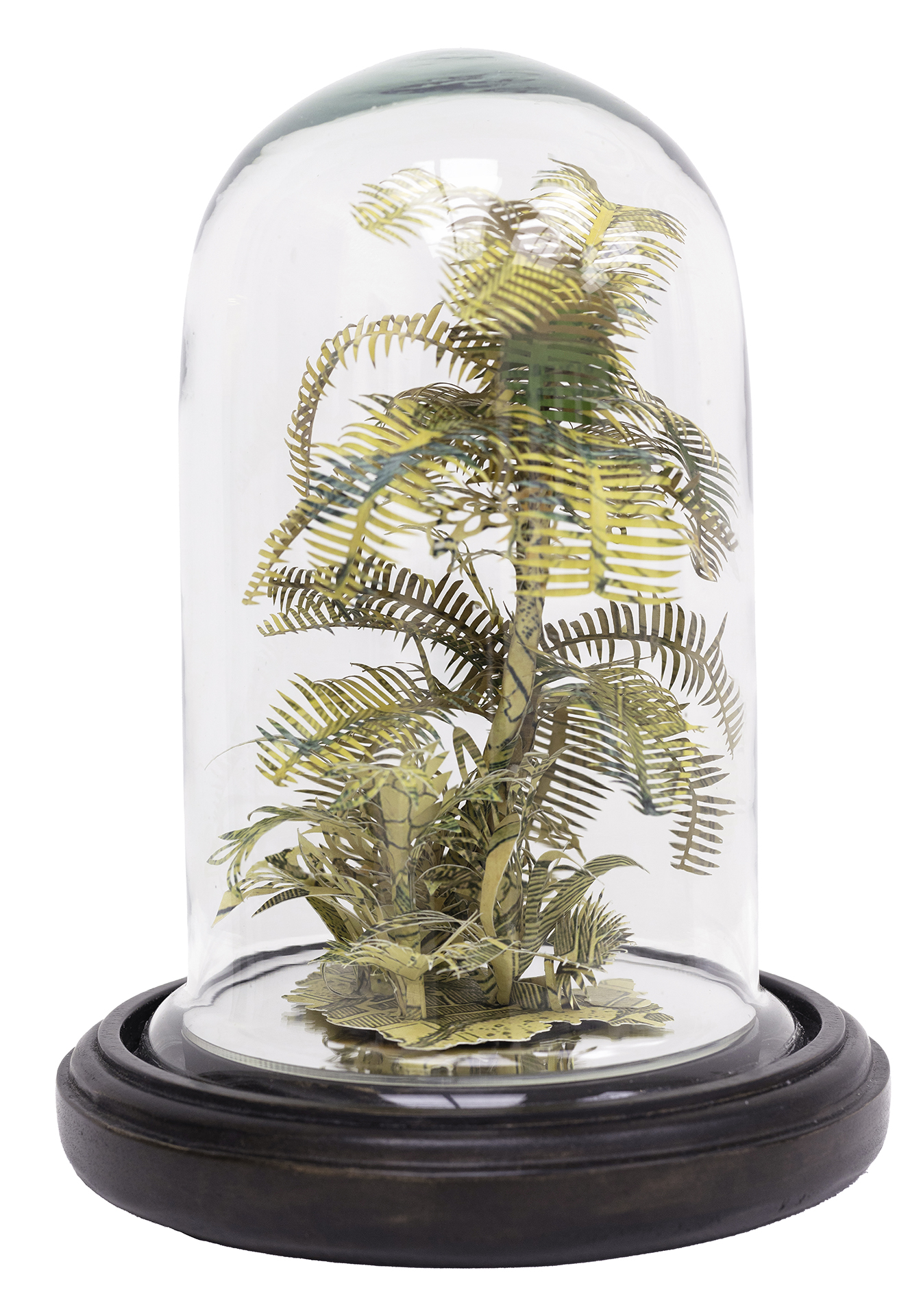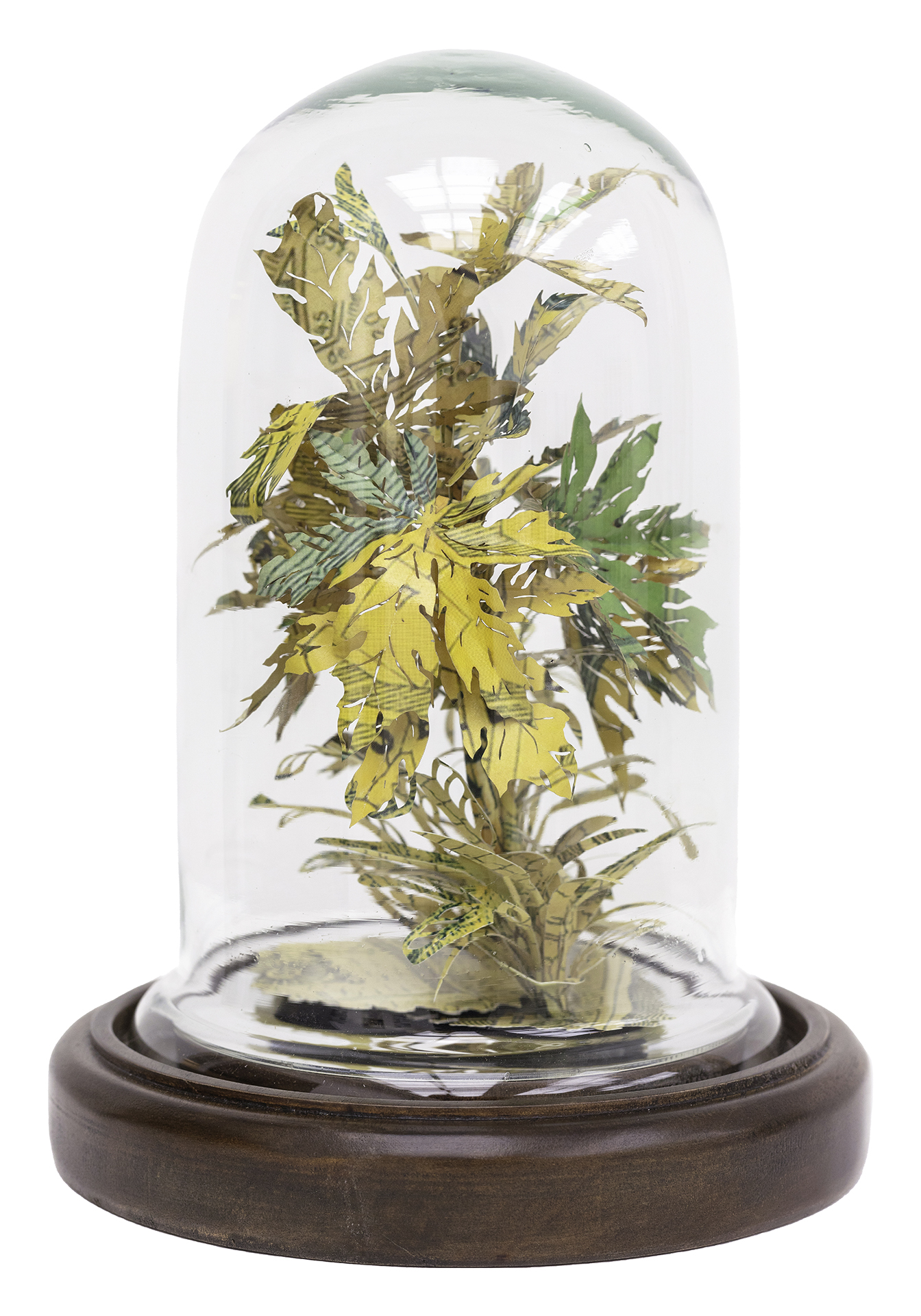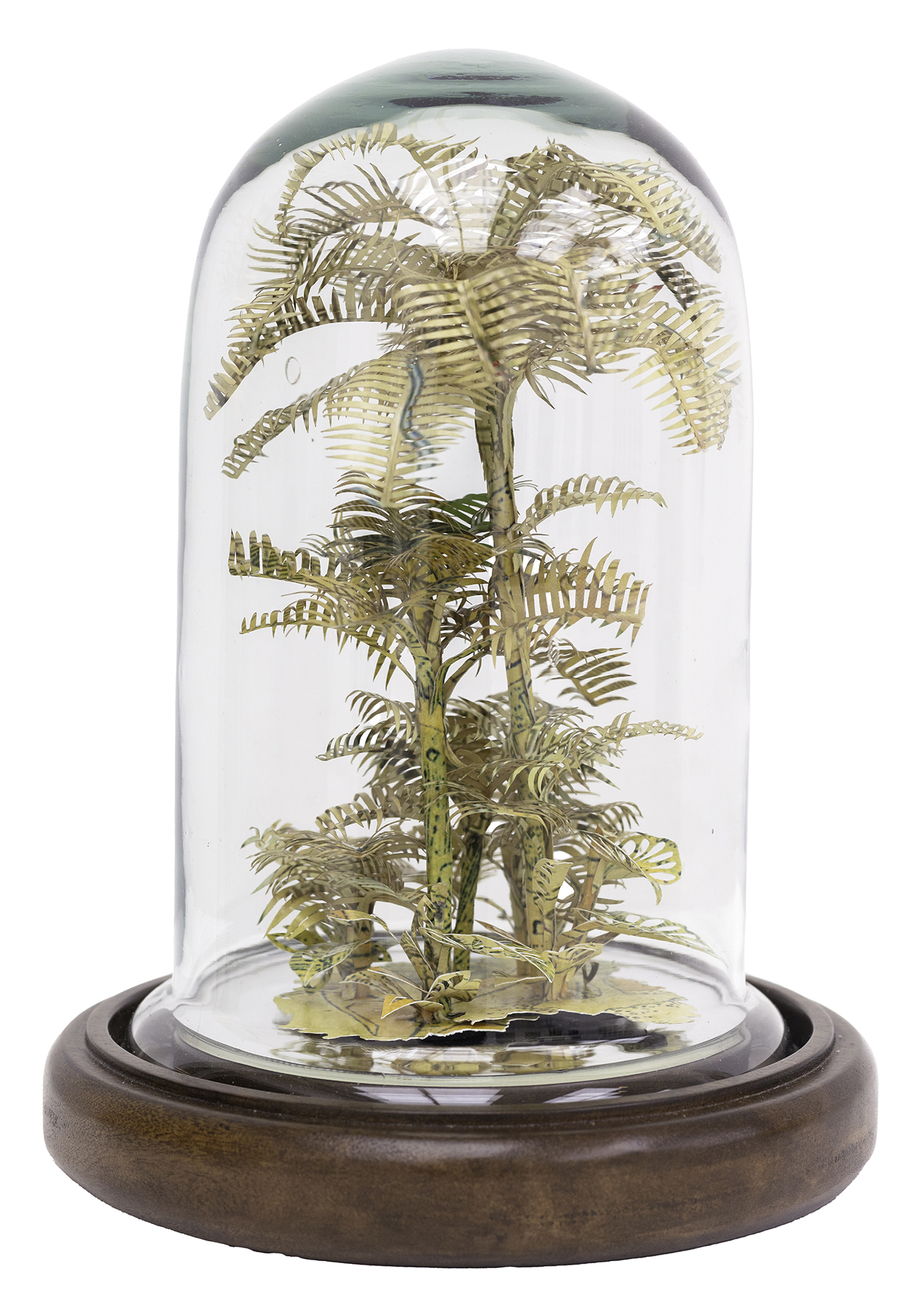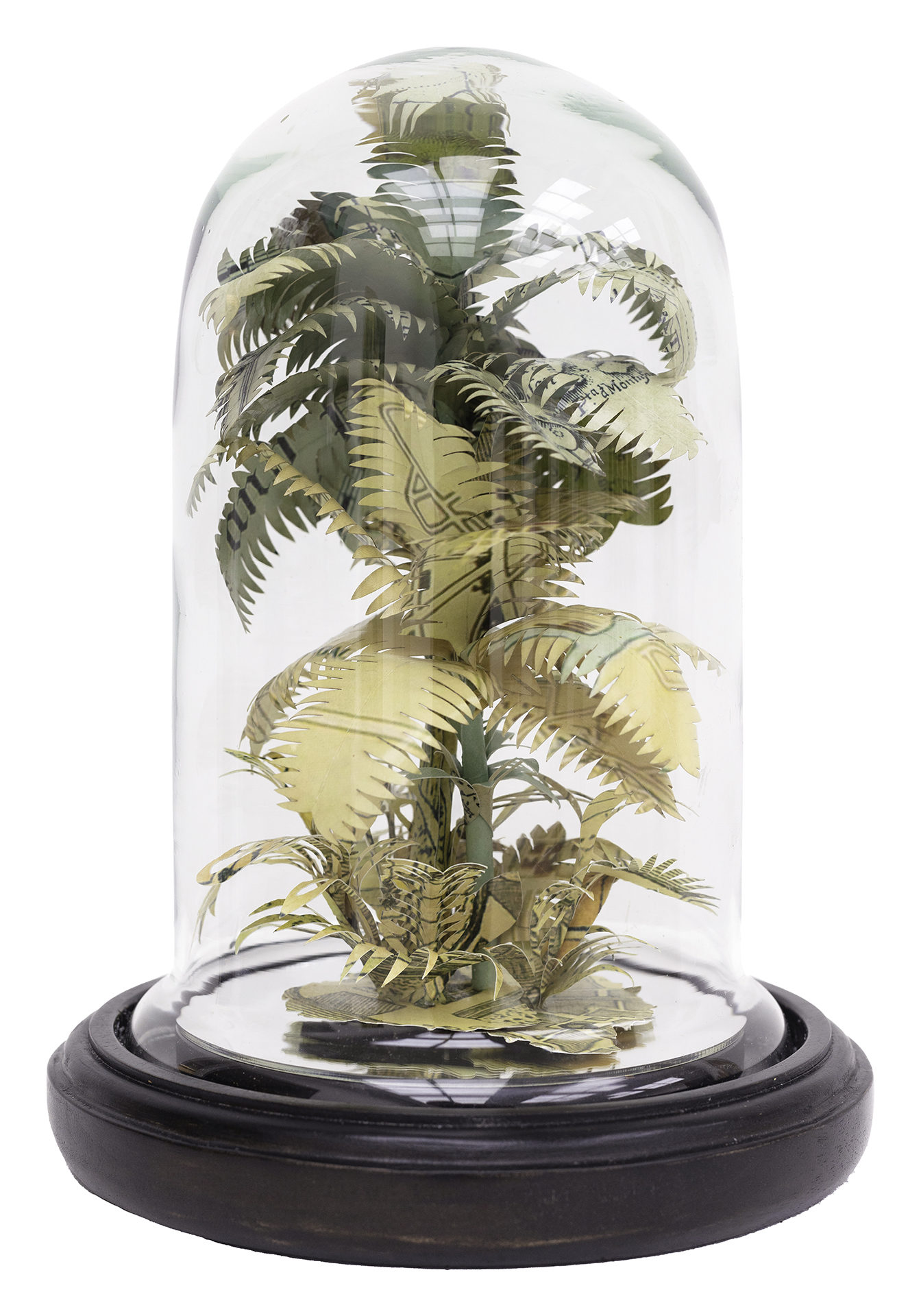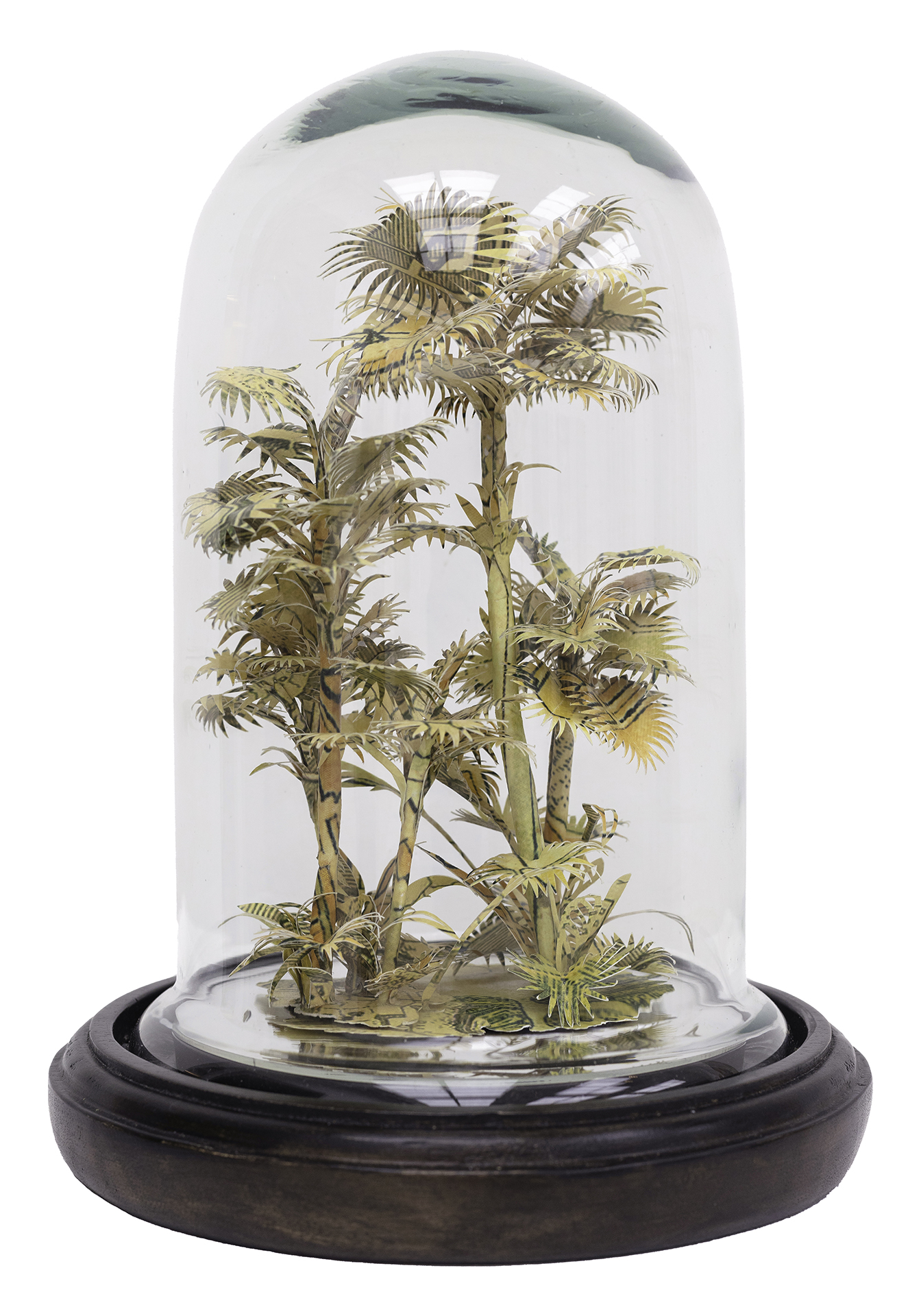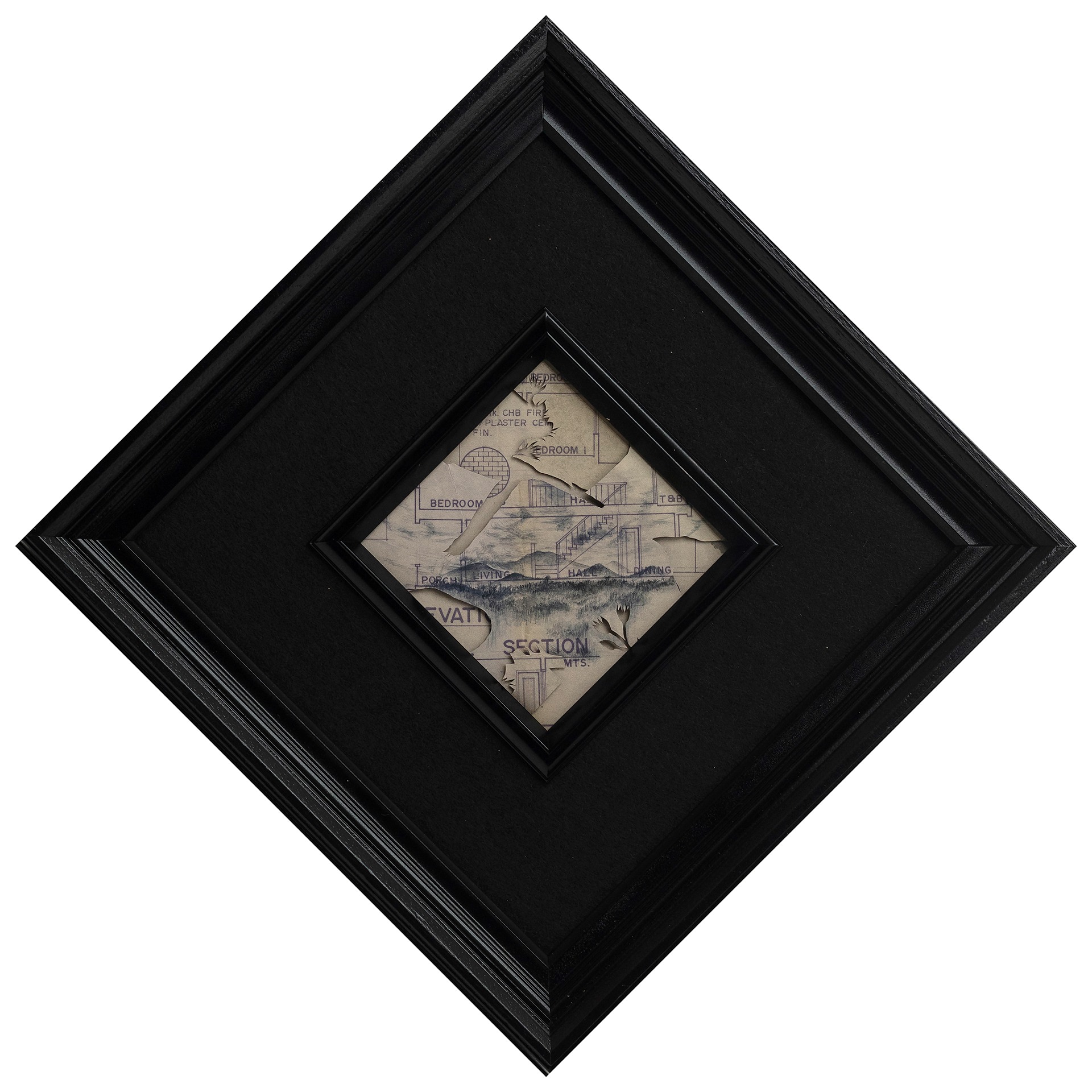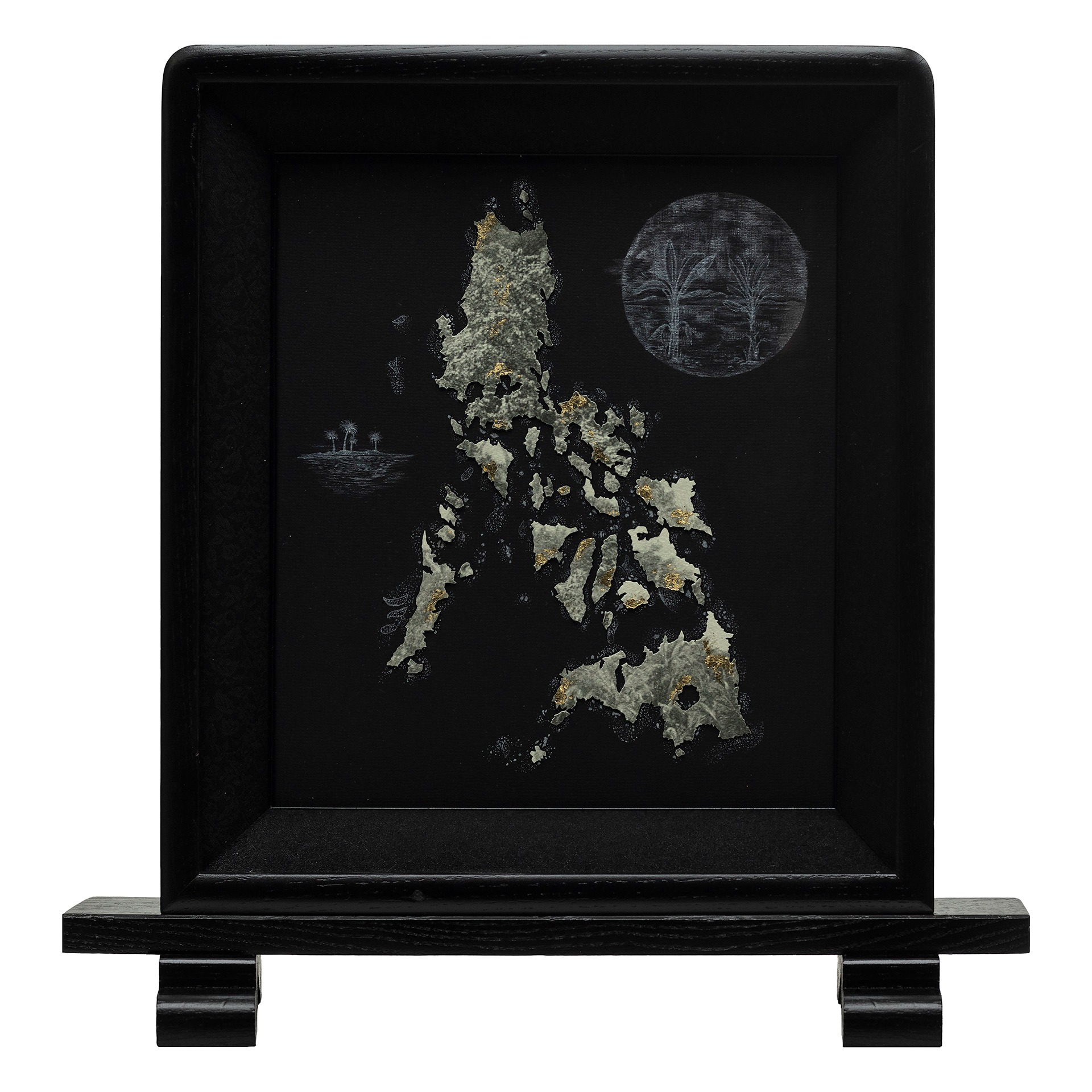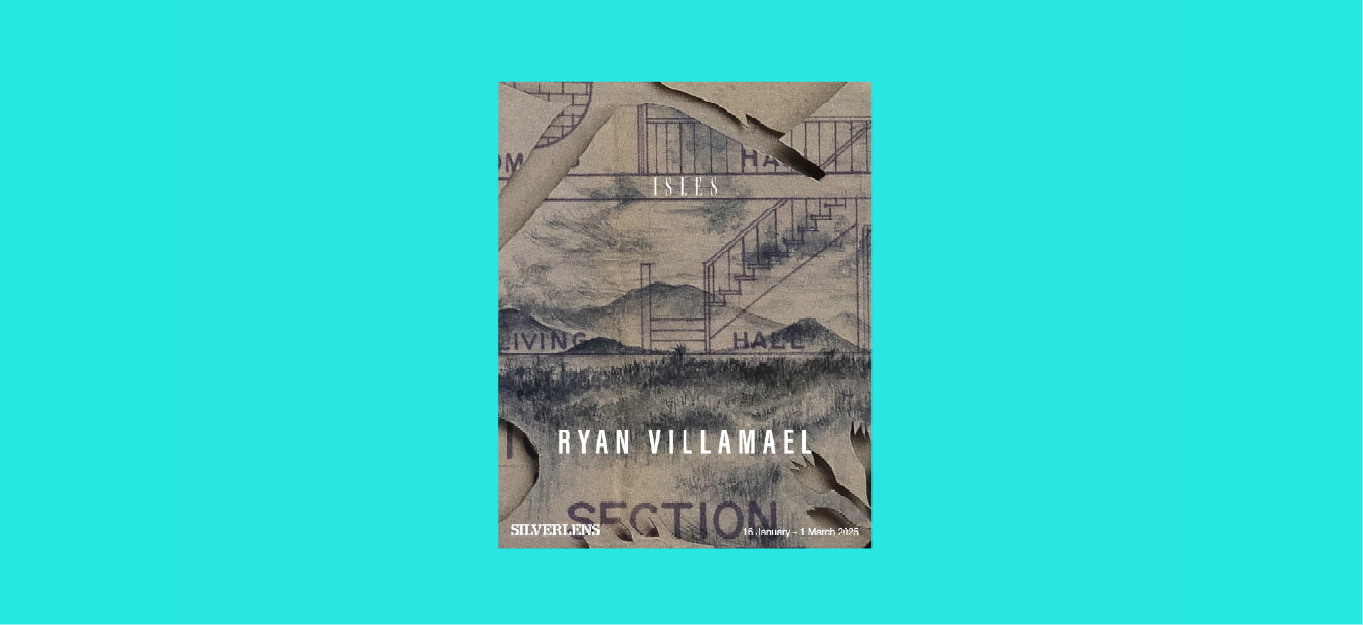
About
Intimate Cartographies
In this latest collection of works, Isles, his first solo exhibition in the United States, Ryan Villamael presents his continuing “Pulô” series—teeming evocations of flora incised from colonial and contemporary maps and encased within bell jars—as well as a duet of works that reflect upon home as memory and memory as home. Intimate in scale and autobiographically revelatory, these pieces reflect on time as matter and idea, situated within the frames of the personal and the historical: its continuities, its repetitions, its fragmentations.
For one, the title of the show is a reprise of his 2014 exhibition, which greatly opened doors for the artist. Isles won the Ateneo Art Awards, one of the most prestigious competitions in the Philippines and notable for its recognition of exhibitions for their overall conceptual and material propositions. It was in this show that Villamael’s paper cutouts assumed a three-dimensional form, transforming the flat surface of maps into something tactile, free-standing, and multi-layered.
It is through this body of work that the artist unpacks the artificiality of maps, which are primarily used to arbitrate geographical limits and territorial ownerships. Now freed from their indexical capacities, the maps are enacted to reckon with and confront traces of the natural world that these very cartographic instruments seek to delineate. Nature, time and time again, resists demarcation lines, and in this series of works, Villamael, who grew up and currently lives in close proximity to a forest reserve, underscores the persistence and triumph of the organic world, which expands, flourishes, and thrives irrespective of man’s paltry coordinates.
That these instances of nature—meticulously trimmed, sliced, and built volumetrically all by hand—are seemingly “trapped” within vitrines points to various significations: as phytogeographic renditions of a particular locale; as lyrical latticework of form resisting two-dimensional representations; as specimens of the tropics with their warm, light-bathed climes. For the works in this exhibition, the fragments of flora may be read as post-epidemic contemplation of humanity’s essential embeddedness in what was once perceived as Nature-as-Other. For once, nature was not something to be explored and exploited, but cultivated, even brought within the confines of the domestic space, as something vital to well-being and intrinsically linked to survival.
Certainly, these works are conversant with the previous iterations now located in various residences and institutions all over the world. Isolated in their respective crystal domains and domed ecosystems, they are linked together by that invisible tendril of the artist’s pursuit of a singular idea. Their presence in the United States, once a colonial power in the Philippines that still currently asserts a dominant presence culturally, economically, and politically, introduces on American soil a conceptual transgressiveness: the endemicity and rootedness of nature that constitutes our archipelagic identity, eternally resistant to occupation.
The exhibition’s beating heart lies in the work, “Echoes of Home,” accompanied by the sound recording of the artist as a six-year-old boy wishing his father a Happy Birthday, interspersed with the reportage of the minutiae of everyday life. For many Filipinos, this kind of recording is familiar: the oral histories that sustained relationships amid homesickness. In the ’90s and earlier, multitudes of cassette tapes flew in and out of the Philippines, preserving voices whose undertow invariably is longing: “We miss you.” “When will we see you again?” “When will you stay for good?” The song, which the artist as a young boy sings near the end of the tape, sums it up: “Always, I wanna be with you.”
The recording from 1993—pre-Internet and still largely analog—serves as a counterpoint to the diamond-shaped work: the fragments of a blueprint of home, which are now painted over with watercolor washes depicting the mountains of Southern Luzon. One intuits that the narrative of a complete, loving family has snagged somewhere: the voice is a memento from a once happy time and, now juxtaposed with the shattered plan for a home, becomes a reminder of the devastations of migration, a phenomenon that continues to this day.
Isles, symbolically, accordions time: between the initial iterations of the “Pulô” series to the ones currently exhibited; between the hoped-for vision of a complete family to the present undertones of estrangement. While the works constitute tremendous process, technique, and execution, it is still essentially the human heart that is in clear display, with its wishes and follies, its suffering and momentary joys, subtly mapped out in the “small islands” of this exhibition. For Villamael, who has always been cognizant of the bigger picture (the coordinates of history that plot the contours of the moment), all geographies are ultimately personal, even hand-made, and we bear upon the land we walk on the imprint of our affinities and longings, our dreams of home and their consequent realization or vanishing.
– Carlomar Arcangel Daoana
Ryan Villamael (b. 1987, Laguna Philippines; lives and works in Los Baños, Philippines) is an artist renowned for working with paper as a sculptural medium. With works ranging from stand-alone soft sculptures to large-scale pieces and immense installations, he has been exploring the themes, tensions, and trajectories of his chosen material for over a decade. Employing a rigorous dedication to technique and precision, Villamael uses the traditional Philippine art form of paper-cutting as a way to mediate and meditate upon history, collective memory, and the interpenetrating layers that constitute a locality. In recent works, he has expanded to explore how paper can become a locus of multiple and overlapping meanings, through which ideas on the natural world, domestic sphere, and urban landscape may be negotiated.
In 2015, his exhibition Isles received the Ateneo Art Award, which allowed him to participate in studio residency grants at La Trobe University Visual Arts Center in Bendigo, Australia; Artesan Gallery in Singapore; and Liverpool Hope University in Liverpool, United Kingdom. The following year, Villamael participated in the Singapore Biennale and, in 2018, in the Biwako Biennale in Japan. Villamael is a recipient of the prestigious Cultural Center of the Philippines Thirteen Artists Award (2021) and was recently invited to the Civitella Ranieri Visual Arts Residency in Italy (2025).
He has exhibited at the Palais de Tokyo in Paris; MAIIAM Contemporary Art Museum in Chiang Mai; Para Site in Hong Kong; Mizuma Gallery in Tokyo; the Arts House in Singapore; ROH Projects in Jakarta; and the Metropolitan Museum in Manila. Upcoming, Villamael will exhibit the seventh iteration of his foundational Locus Amoenus series in Musafiri: Travellers and Guests at Haus der Kulturen der Welt in Berlin (2025).
Installation Views
Works
